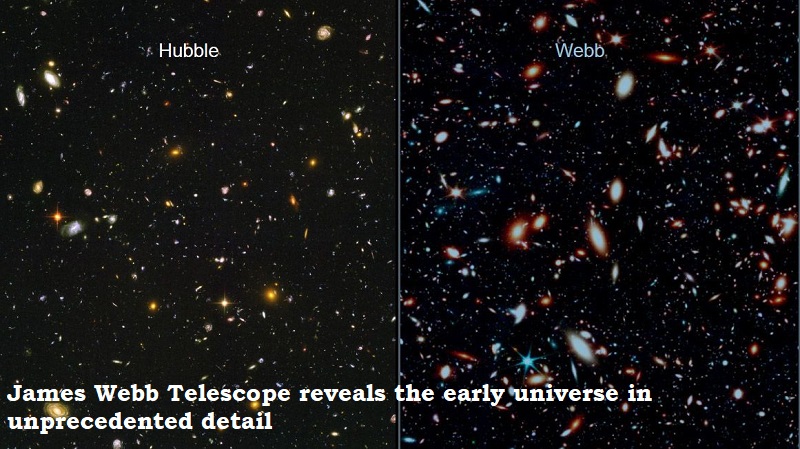
The James Webb Space Telescope was designed and constructed to travel across time and see the first seconds of the universe’s creation. Astronomers have had a peek of the early universe thanks to the most powerful observatory in the world.
Tiger Hsiao of Johns Hopkins University, Dan Coe of AURA/STScI for the European Space Agency and Johns Hopkins University, Rebecca Larson of the University of Texas, and Dan Coe of Johns Hopkins University have all observed the far-off galaxy MACS0647-JD with Webb.
MACS0647-JD was initially spotted by the Hubble telescope roughly ten years ago. It was a tiny galaxy that developed 400 million years after the Big Bang, at a very small scale.
The scientists sought to determine whether the two objects were two galaxies or two groups of stars within a galaxy after seeing not one but two during Webb observation.
‘You can also see that the colors between the two objects are so different. One’s bluer; the other one is redder. The blue gas and the red gas have different characteristics. The blue one actually has a very young star formation and almost no dust, but the small, red object has more dust inside, and is older. And their stellar masses are also probably different,’ Tiger Yu-Yang Hsiao said.
In order to understand the nature of galaxies in the early universe, astronomers have long relied on gravitational lensing, which allows weak background galaxies to be magnified and appear more than once in various locations throughout the image.
The potential that it could also be a galaxy merger in the very early cosmos excites the scientists. But it is yet to be confirmed.

Post Your Comments